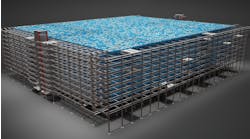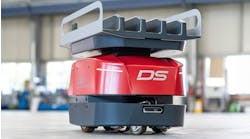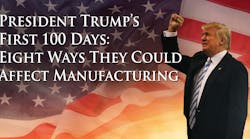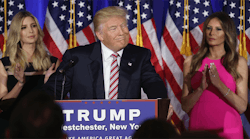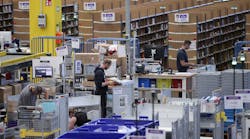Latest from Industry Trends
Industrial Rebirth Must Come from Innovation, Not Federal Bullying
President Donald Trump's economic adviser, Peter Navarro, has vowed to restore U.S. manufacturing supremacy. This is no surprise -- Trump's election campaign emphasized the promise of a return to the industrial economy of the mid-20th century, before countries such as China supplanted the U.S. as the workshop of the world.
But this push is unlikely to succeed. Changes in the U.S. industrial mix, and in technology itself, mean there's no going back to the economy of yesteryear. To understand why this is true, everyone should read "The New Geography of Jobs," by University of California-Berkeley economist Enrico Moretti. It's probably the most important popular economics book of the decade.
Moretti demonstrates that there really are two Americas -- one that's healthy, rich and growing, and a second that's increasingly being left behind. The two nations-within-a-nation are divided not so much by region or race or religion, but by the kinds of industries they support. Those cities and towns that are home to innovative industries -- information technology, pharmaceuticals, advanced manufacturing and the like -- are wealthier, healthier and safer, while the places without these industries are steadily declining.
"The New Geography of Jobs" catalogs these changes relentlessly. Moretti has done his homework -- he can rattle off the names of places like Visalia, California, and Bridgeton, New Jersey, that have failed to catch the train of the innovation economy. In graph after graph, he shows that the cities with better social indicators in the 1980s -- longer life expectancy, lower divorce rates and higher voter turnout -- have steadily increased their advantage since then. And these are also the cities with the highest number of college graduates -- the innovation hubs. The places that are being left behind are the ones that lack top-end human capital.
Why this divergence? The reason, Moretti explains, is what economists call local multipliers. Every American with a high-paying innovation job -- every software engineer, every manager at a drug company -- shops locally. They pay doctors to fix their knees. They pay yoga teachers and personal trainers and dieticians. They hire roofers and landscapers and electricians and plumbers. They shop at local stores and eat at local restaurants. Every dollar that the innovation industries pull in from outside gets spent around town, and then spent again.
Most of the jobs in the country, Moretti shows, come from these local services. This was even true in the era of manufacturing, when less than a third of American jobs came from factories:
Local multipliers are the key to providing Americans with good jobs.
Manufacturing creates local multipliers too. But the kind of industries the U.S. used to specialize in -- textiles, steel and cars -- provide much smaller multipliers than the innovative industries that the country has now shifted into. The U.S. didn't lose out to China -- it simply shifted into more productive industries. If the country were to return to the kind of low-multiplier manufacturing that it left behind in the 1980s, it would be a lot poorer as a result.
In 1955, William F. Buckley of the National Review wrote that conservatism's job was to "stand athwart history, yelling Stop." But if Trump and his team try to make economic history stop, the results won't be pretty. Economic history is a story of progress and enrichment, but also a story of businesses and regions making the difficult changes they need to survive and thrive. Trying to turn the U.S. back into a nation of smokestacks and metal benders just won't help anyone.
So if returning to mass manufacturing isn't the solution, what is? When you can't go back, you have to push forward. The U.S. has to make the innovation economy work even better.
One solution Moretti suggests is to help more people move to the innovation hubs. As things stand, many of the best-performing cities limit their populations with development restrictions. Creating more density in cities such as Austin, Texas, San Francisco and San Diego would benefit service workers and low-income people, who Moretti shows do better in these cities even after accounting for local living costs. It would also allow low-income people to move out of the depressed, stagnant towns. That would reduce rent costs in those declining areas, as well as making local job competition less intense.
Another idea is to focus on government investment in human capital. That means expanding universities, upgrading their research capabilities and developing links between universities and local businesses. This won't turn every town in the U.S. into Silicon Valley, but it will help many local economies, and will allow the U.S. to keep its edge in high-value innovation industries. This policy requires recruiting high-paying foreign students, since their higher tuition would be necessary to subsidize more cheap spots for native-born Americans.
Trump's economic team needs to read Moretti's book. Writing angry tweets at companies that open factories in Mexico won't create good jobs for American workers. But expanding universities and allowing greater urban density just might do the trick. If Trump and his people can't do this, the Democrats should make it a pillar of their own economic strategy. There is no way back for the U.S. economy -- only forward, further into the innovation age.
This column does not necessarily reflect the opinion of the editorial board or Bloomberg LP and its owners.







